Voltcraft ALC 8500 Expert Handleiding
Voltcraft
Batterij-oplader
ALC 8500 Expert
Bekijk gratis de handleiding van Voltcraft ALC 8500 Expert (29 pagina’s), behorend tot de categorie Batterij-oplader. Deze gids werd als nuttig beoordeeld door 17 mensen en kreeg gemiddeld 4.8 sterren uit 9 reviews. Heb je een vraag over Voltcraft ALC 8500 Expert of wil je andere gebruikers van dit product iets vragen? Stel een vraag
Pagina 1/29

Battery Charging Centre
ALC 8500-2 Expert
Operating Instructions

Contents:
1 Introduction ................................................................................................................... 32
1.1 The essential performance features of the ALC 8500-2 Expert .................................... 32
1.2 Proper use ..................................................................................................................... 34
2 Safety Notes .................................................................................................................. 34
3 Controls, display elements ............................................................................................ 36
4 Charge processes, charge outputs ............................................................................... 37
5 Battery capacities, charge power, currents ................................................................... 38
6 Battery Ri measurement function ................................................................................. 38
7 Lead-acid activator (reviver) function ............................................................................ 40
8 Data logger .................................................................................................................... 41
9 USB interface ................................................................................................................ 41
10 The charger in use ......................................................................................................... 41
10.1 Basic settings ................................................................................................................ 41
10.2 Main window ................................................................................................................. 41
10.3 Channel windows .......................................................................................................... 43
10.4 Channel LEDs ............................................................................................................... 43
11 Main Menu .................................................................................................................... 44
12 Selecting the charge channel, entering data ................................................................. 44
12.1 Channel menu ............................................................................................................... 44
12.2 Battery ........................................................................................................................... 44
12.3 Conf. Bat. (configuring batteries) .................................................................................. 45
12.3.1 Charge rates .................................................................................................................. 46
12.4 Function ........................................................................................................................ 47
12.4.1 Charge ........................................................................................................................... 47
12.4.2 Discharge ...................................................................................................................... 47
12.4.3 Discharge / Charge ....................................................................................................... 47
12.4.4 Test ................................................................................................................................ 47
12.4.5 Refresh .......................................................................................................................... 48
12.4.6 Cycle ............................................................................................................................. 48
12.4.7 Forming (balancing) ....................................................................................................... 48
12.4.8 Maintain ......................................................................................................................... 48
13 B. Resist. (battery Ri measurement function) ................................................................ 49
14 Conf. menu .................................................................................................................... 51
14.1 Database ....................................................................................................................... 51
14.1.1 New Bat. ....................................................................................................................... 51
14.1.2 Edit Bat. ........................................................................................................................ 51
14.1.3 Del. Bat. ........................................................................................................................ 52
14.1.4 Return ........................................................................................................................... 52
14.2 Charge / discharge parameters .................................................................................... 52
14.3 Setup ALC ..................................................................................................................... 53
14.3.1 Illuminat. ........................................................................................................................ 53
14.3.2 Contrast ........................................................................................................................ 53
14.3.3 Al. beep ......................................................................................................................... 53
14.3.4 But. beep ....................................................................................................................... 53
15 Display of charged-in / discharged capacity ................................................................ 54
16 Reading out the data logger on-screen ........................................................................ 54
17 Reading out the data logger via the USB interface ....................................................... 54
18 Supplementary notes .................................................................................................... 55
18.1 Reversed polarity protection ......................................................................................... 55
18.2
18.3 Automatic cooling fan ................................................................................................... 55
18.4 Output stage fuses ........................................................................................................ 55
18.5 Mains fuse ..................................................................................................................... 55
18.6 Temperature sensor ...................................................................................................... 55
18.7 Error messages ............................................................................................................. 56
19 Maintenance, care ......................................................................................................... 57
20 Specification ................................................................................................................. 58
GB
Discharging single cells ................................................................................................. 55
31

32
1 Introduction
Rechargeable cells, and rechargeable battery packs in particular, are a basic requirement for mobile
equipment, and nowadays they have found their way into virtually all areas of daily life. Today’s con-
sumers expect mobility, especially in the world of communication, and without suitable rechargeable
energy storage devices this would all be unthinkable, as primary cells (dry cells) are too expensive to
be a viable alternative for many applications. Other areas of activity where nothing “works” without
rechargeable battery systems include a vast range of electric tools - and modelling.
Nickel-Cadmium (NC) and Nickel-Metal-Hydride (NiMH) batteries have always played a dominant role
in this field, and they continue to do so, especially where high discharge currents are required. For
these “high-current” applications the strengths of the old, familiar nickel-cadmium battery are just as
important now as they ever were, as their low internal resistance, shallow discharge curve and fast
charge capability are particularly significant.
For a given cell size, Nickel-Metal-Hydride (NiMH) batteries offer considerably higher capacity, and
they are also much more environmentally friendly since they do not contain cadmium, which is a toxic
heavy metal. All the technical parameters of NiMH cells are being improved constantly, and it seems
inevitable that they will increasingly take over from NC cells in the future.
However, the full performance capability of a rechargeable battery, regardless of the cell technology,
is only maintained if the user cares for it in the appropriate way. Overcharging and deep-discharging
have a particularly damaging effect on the useful life of any energy storage device.
Many electrical devices are supplied as standard with chargers which, for obvious reasons of cost,
are devoid of any “intelligence”, and these crude devices do nothing to extend the useful life of the
batteries with which they are used. The modelling world is not immune to this effect, and the useful
life of our battery packs - some of them extremely expensive - is greatly reduced if unsuitable charging
methods are employed. Often this results in a pack which only delivers a fraction of the maximum
possible number of charge / discharge cycles. When you bear these aspects in mind, the cost of a
sophisticated, efficient battery charger is quickly recouped.
1.1 The essential performance features of the ALC 8500-2 Expert
The ALC 8500-2 Expert is an absolute top-notch device in terms of battery charging technology, and
includes performance features offered by no other charger. It provides four charge channels, operating
independently of each other, and capable of carrying out entirely different functions simultaneously. The
charger’s comprehensive range of functions and program sequences are supported by a large, backlit
graphic screen, and the unit is easy to operate thanks to the inclusion of a jog dial and a straightforward
menu system.
The ALC 8500-2 Expert supports all the most important battery technologies, including Nickel-Cadmium
(NC), Nickel-Metal-Hydride (NiMH), Lead-Gel, Lead-Acid, Lithium-Ion (Li-Ion) and Lithium-Polymer (LiPo).
The fir
mware of the forward-looking ALC 8500-2 Expert can be updated at any time due to the use of
flash memory. This means that the software can be expanded and the charger updated to cope with
new or changing battery technologies.
The ALC 8500-2 Expert features four separate charge outputs to which rechargeable cells or batteries
can be connected simultaneously; the generously rated mains power supply allows all four channels to
operate at the same time.
Charge channels 1 and 2 are designed for battery packs containing up to twenty series-wired cells, and
each can deliver a charge current of up to 5 A (according to the cell count; see Table 1). To reduce the
waste heat, secondary pulsed switching regulators are used in this section.
Charge channels 3 and 4 are designed for batteries with a nominal capacity of up to 12 V (10 cells); the
total rated charge current can be divided up over these two channels in any way you wish.
The charger also features a battery database in which you can store charge parameters for individual
batteries; these parameters can then be called up again at any time. When you wish to charge cells or
batteries whose data has already been stored, the charger simply uses that data for its processing,
eliminating the need to set the charge parameters all over again. The ALC 8500-2 Expert also incorpo-
rates an integral data logger which records complete charge / discharge cycles without the need to have
Product specificaties
| Merk: | Voltcraft |
| Categorie: | Batterij-oplader |
| Model: | ALC 8500 Expert |
Heb je hulp nodig?
Als je hulp nodig hebt met Voltcraft ALC 8500 Expert stel dan hieronder een vraag en andere gebruikers zullen je antwoorden
Handleiding Batterij-oplader Voltcraft

29 Maart 2025

15 November 2024
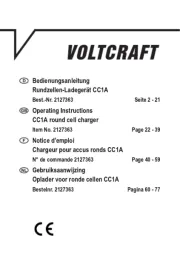
4 September 2024

4 September 2024

7 Augustus 2024

7 Augustus 2024

7 Augustus 2024

7 Augustus 2024

7 Augustus 2024

11 December 2023
Handleiding Batterij-oplader
Nieuwste handleidingen voor Batterij-oplader
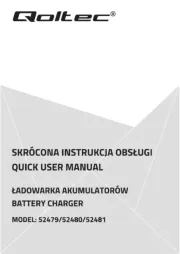
12 September 2025
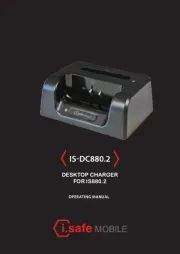
8 September 2025
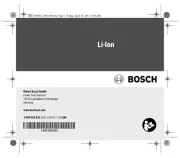
2 September 2025
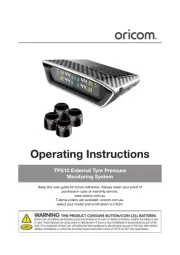
1 September 2025
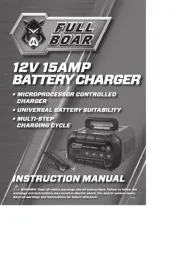
1 September 2025
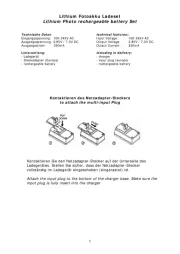
27 Augustus 2025
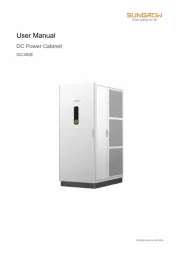
26 Augustus 2025
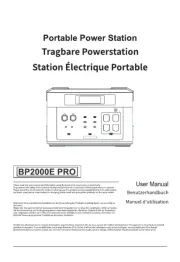
26 Augustus 2025
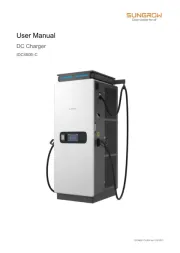
25 Augustus 2025
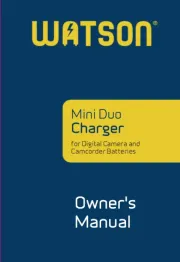
15 Augustus 2025